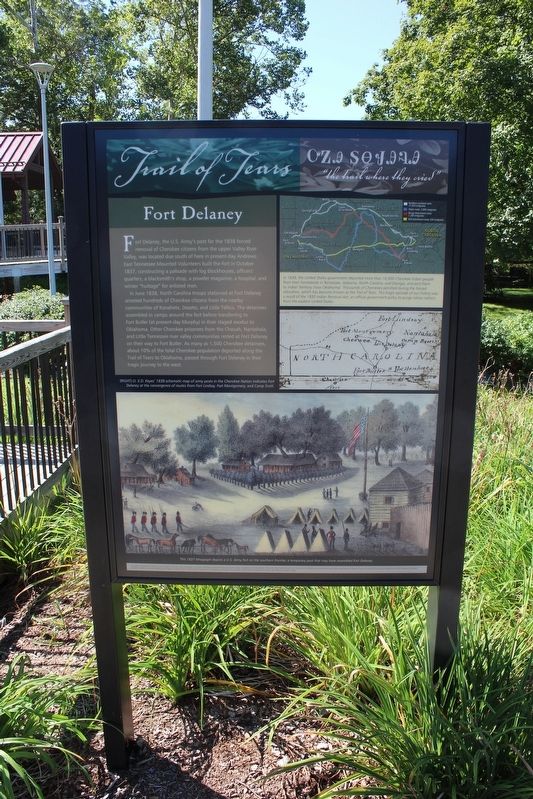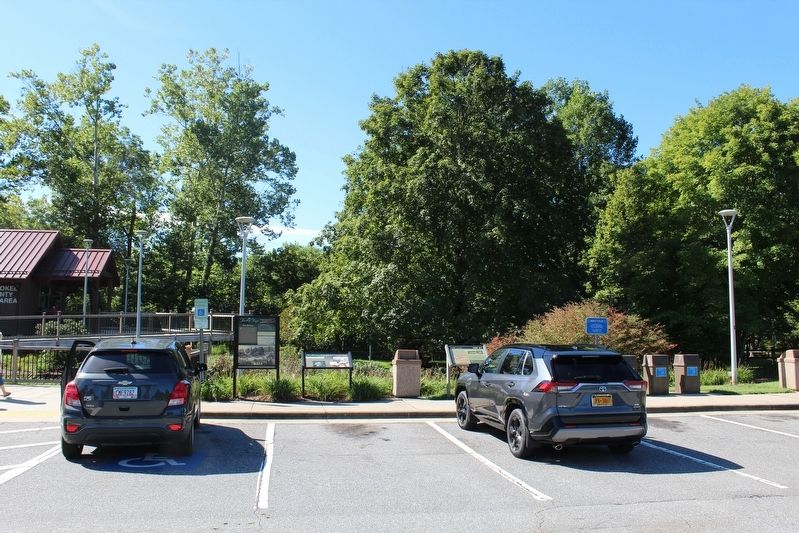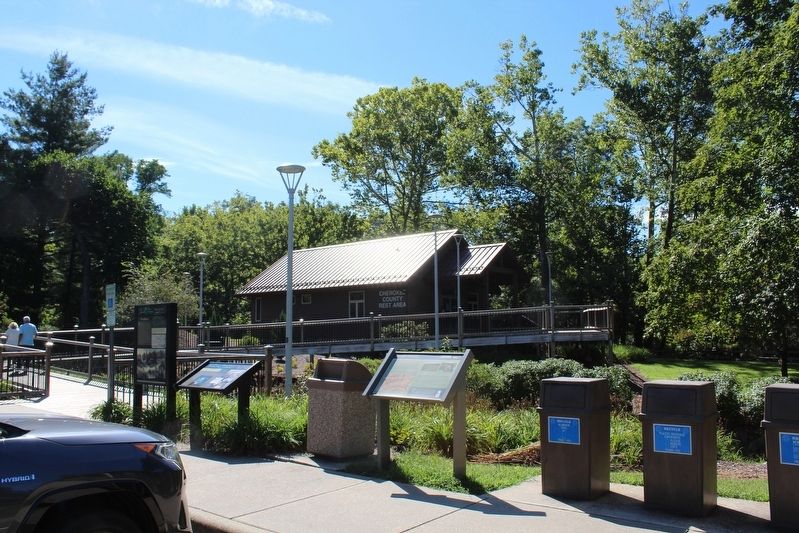Andrews in Cherokee County, North Carolina — The American South (South Atlantic)
Fort Delaney
Trail of Tears
In June 1838, North Carolina troops stationed at Fort Delaney arrested hundreds of Cherokee citizens from the nearby communities of Konahete, Dasetsi, and Little Tellico. The detainees assembled in camps around the fort before transferring to Fort Butler (at present-day Murphy) in their staged exodus to Oklahoma. Other Cherokee prisoners from the Cheoah, Nantahala, and Little Tennessee river valley communities rested at Fort Delaney on their way to Fort Butler. As may as 1,500 Cherokee detainees, about 10% of the total Cherokee population departed along the Trail of Tears to Oklahoma, passed through Fort Delaney in their tragic journey to the west.
(sidebar)
In 1838, the United States government deported more than 16,000 Cherokee Indian people from their homelands in Tennessee, Alabama, North Carolina, and Georgia, and sent them to Indian Territory (now Oklahoma). Thousands of Cherokees perished during the forced relocation, which has become known as the Trail of Tears. This tragic episode of our history was a result of the 1830 Indian Removal Act, an official government policy to purge native nations from the eastern United States.
(captions)
(RIGHT) Lt. E.D Keyes’ 1838 schematic map of army posts in the Cherokee Nation indicates Fort Delaney at the convergence of routes from Fort Lindsay, Fort Montgomery, and Camp Scott.
This 1837 lithograph depicts a U.S. Army fort on the southern frontier, a temporary post that may have resembled Fort Delaney.
Erected by North Carolina Chapter of the Trail of Tears Association.
Topics and series. This historical marker is listed in these topic lists: Forts and Castles • Native Americans. In addition, it is included in the Trail of Tears series list. A significant historical month for this entry is June 1838.
Location. 35° 12.318′ N, 83° 49.783′ W. Marker is in Andrews, North Carolina, in Cherokee County. Marker can be reached from the intersection of Locust Street and County Highway 1419, on the left when traveling north. Marker is located 0.1 miles west of the intersection at the Andrews Rest Area. Touch for map. Marker is in this post office area: Andrews NC 28901, United States of America. Touch for directions.
Other nearby markers. At least 8 other markers are within 8 miles of this marker, measured as the crow flies. Resistance and Resurgence on Valley River (here, next to this marker); Konehete (a few steps from this marker); The Old Army Road (within shouting distance of this marker); Harold H. Hall (approx. 0.3 miles away); The "Peavine" Special (approx. 0.3 miles away); Valleytown Center (approx. 0.4 miles away); Junaluska (approx. 8 miles away); Junaluska's Distingusihed Service (approx. 8 miles away). Touch for a list and map of all markers in Andrews.
Credits. This page was last revised on September 17, 2020. It was originally submitted on September 13, 2020, by Tom Bosse of Jefferson City, Tennessee. This page has been viewed 574 times since then and 96 times this year. Photos: 1, 2, 3. submitted on September 13, 2020, by Tom Bosse of Jefferson City, Tennessee. • Bernard Fisher was the editor who published this page.


